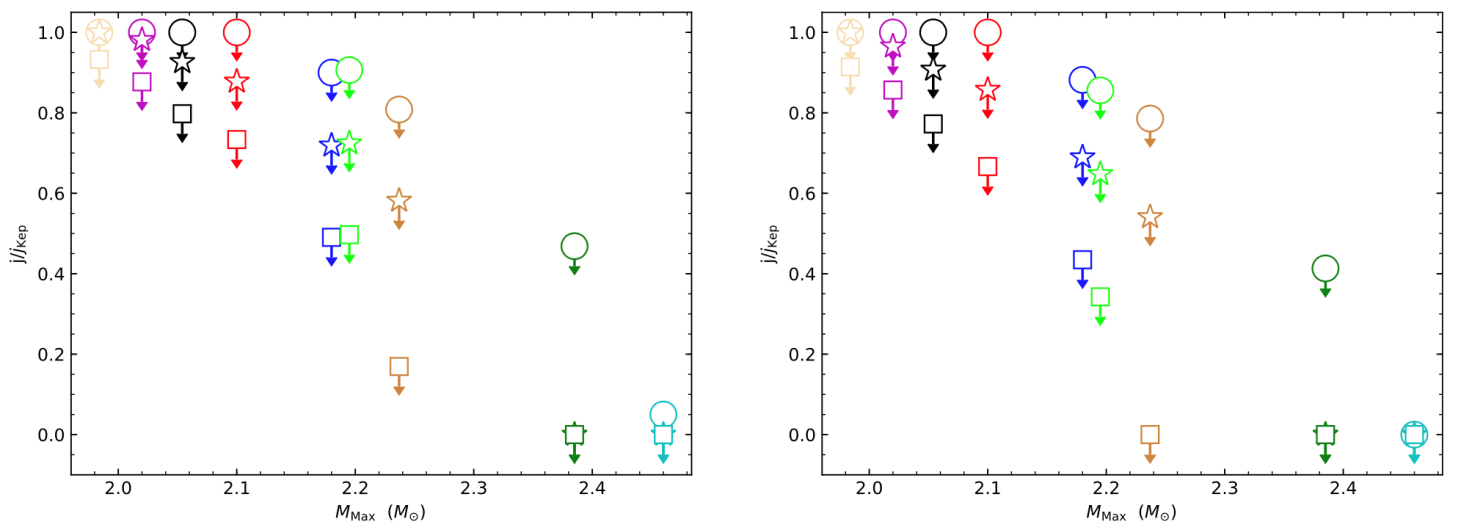The gravitational wave data of GW170817 indicated that the merge is from two neutron stars (NSs) and there is no supermassive neutron (SMNS). We examine the equation of state (EoS) of NS with the gravitational wave data. In the mass-shedding limit (for which the dimensionless angular momentum equals the Keplerian value, i.e., j = jKep), the adopted seven EoS models, except for H4 and ALF2, yield supermassive NSs in more than half of the mergers. However, for j <= 0.7jKep, the presence or absence of a non-negligible fraction of supermassive NSs formed in the mergers depends sensitively on both the EoS and the mass distribution of the binary systems. We have also discussed the maximum mass of nonrotating NSs: we convert the distribution of chirp mass and mass ratio to the mass of each neutron star by using Jacobian matrix. Based on the absence of SMNS in the remnant, the 90% confidence level upper limits on Mmax, as a function of j/jKep. 
Fig. Constraint on j/jKep, set by the absence of SMNS signature for GW170817/GRB 170817A, for the ALF2, H4, SLy, and NS radius-based EoS, APR4, WFF2, ENG, APR3, and MPA1 models, from left to right in each panel, where Mtot = 2.73Msun and M1 = M2 are assumed (see the circles). The left and right panels are for mloss = 0.03Msun and 0.05Msun, respectively. The requests on j/jKep, supposing an SMNS is still absent for mergers of Mtot = (2.5, 2.6)Msun binary systems, are also presented (see the open squares and pentagrams, respectively). For more detail and information about this work, seen in http://iopscience.iop.org/article/10.3847/1538-4357/aabafe/meta (Information Source: PMO) |

